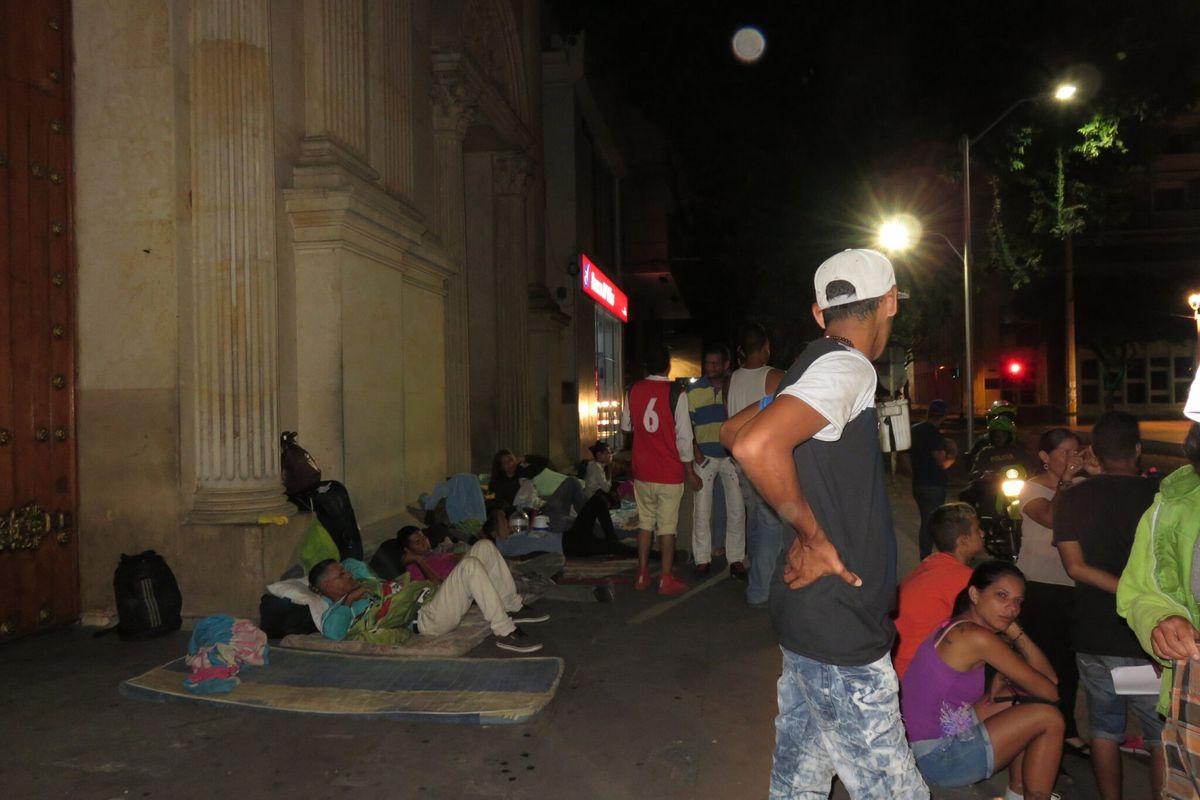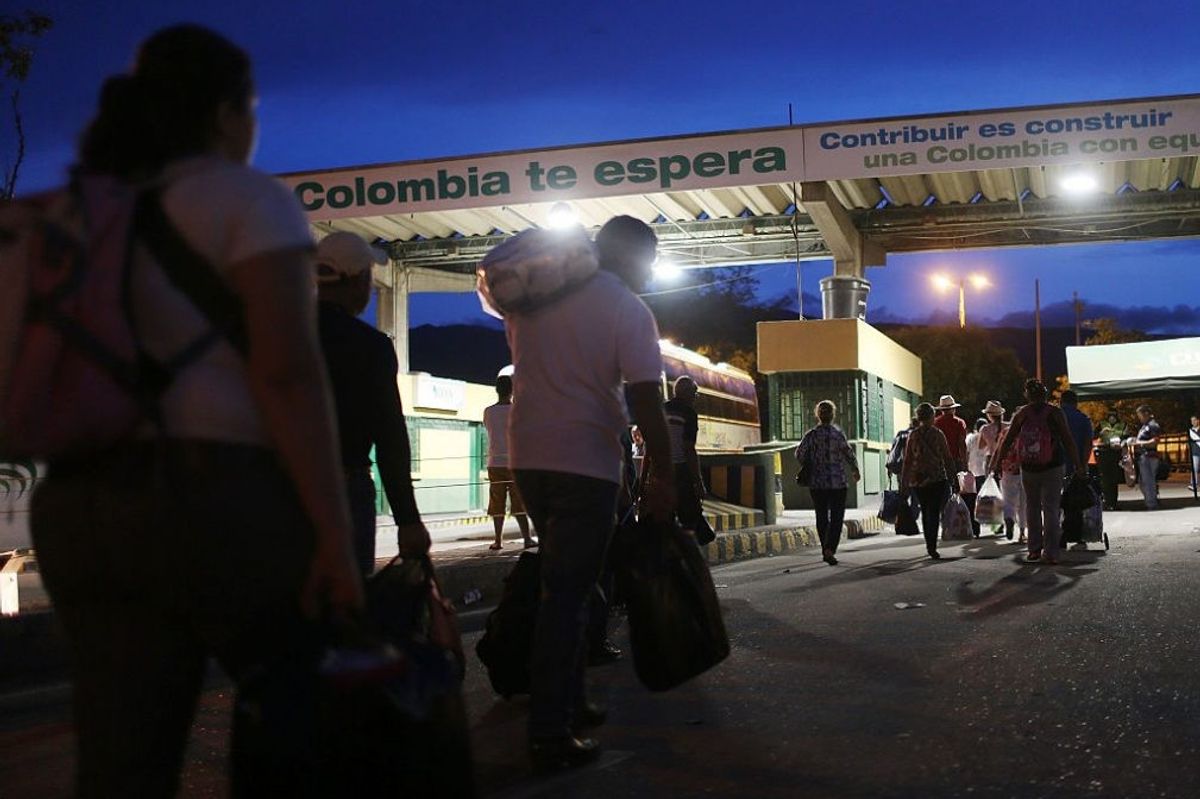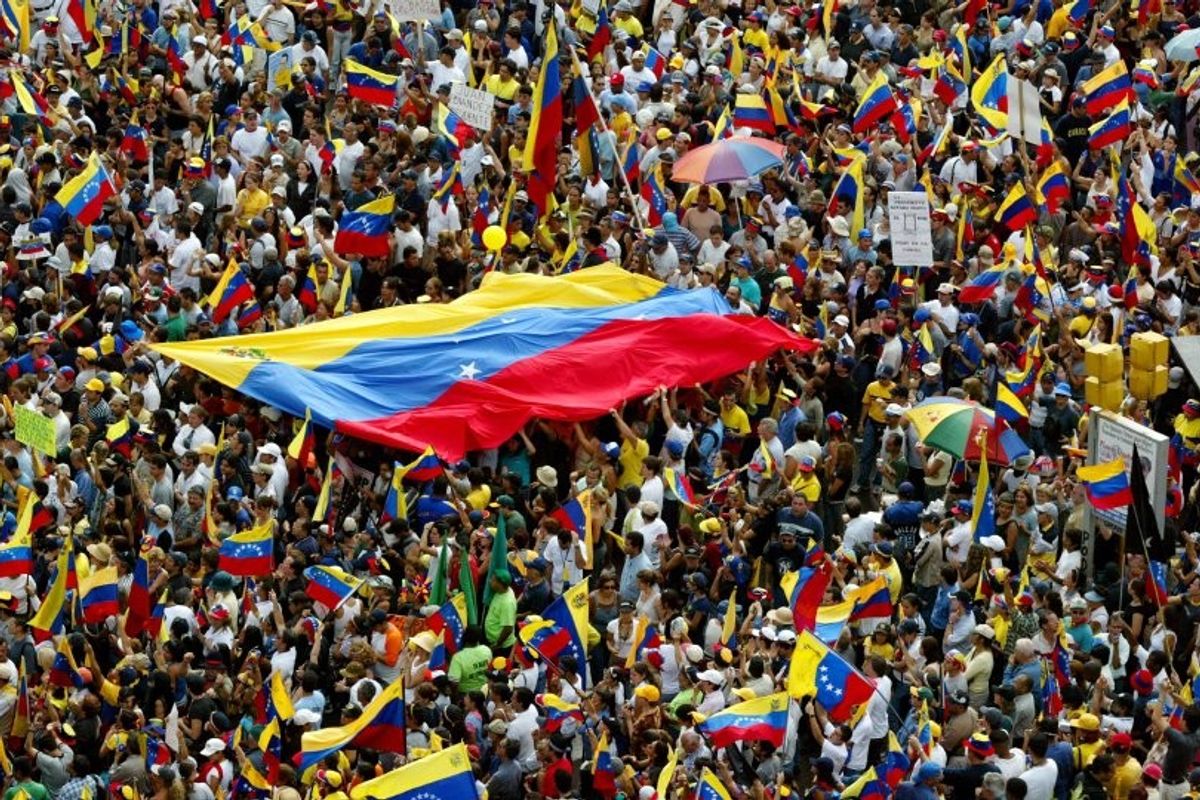Colombia’s pollsters, who are usually pretty accurate predictors of vote results, didn’t foresee this. Public opinion surveys showed a clear majority of voters in the South American nation—from 55 percent to as many as 72 percent—intending to vote “yes” in an October 2 plebiscite to approve or reject a peace accord with the Revolutionary Armed Forces of Colombia (FARC) guerrilla group. The accord itself, which would have ended a 52-year-old conflict—was signed at a euphoric ceremony just six days earlier, in the presence of several Latin American presidents, U.S. Secretary of State John Kerry, UN Secretary-General Ban Ki Moon, and many other dignitaries.
It would have been reasonable to expect the September 26 ceremony to boost support for the peace accord still further. It did not. In a shocking result that has sent the government of President Juan Manuel Santos into profound crisis and generated innumerable Brexit (the UK’s vote to leave the European Union) comparisons, Colombian voters—at least, the 37 percent who turned out—rejected the peace accord by a 50.2 percent to 49.7 percent margin.
It’s not clear what is going to happen next. When the Santos government’s representatives said they had no “Plan B,” they weren’t bluffing to discourage “no” voters. There is no clear way ahead.
There is modest hope for a way forward, and strong concern that a historic opportunity may be missed. But before getting into possible scenarios, it’s important to understand why this result happened.
First, the FARC are deeply unpopular because of a past filled with human rights crimes. Its actions were responsible for a minority (perhaps a quarter, nobody knows) of the 220,000 Colombians who lost their lives in the conflict. A larger share were killed by pro-government paramilitary militias who usually operated with government forces’ active or tacit support or acquiescence. But the FARC dominated grim categories like kidnapping, child recruitment, use of landmines, and indiscriminate attacks on populations and national infrastructure. As a result, the group is widely disliked.
Second, people in most densely populated areas haven’t felt the conflict’s impact for a long time. A military offensive, fought most intensely between 2002 and 2008, pushed FARC fronts out of the vicinity of Colombia’s principal cities and away from main roadways. As a result, for most citizens of this 70-plus percent urbanized country, the conflict has mainly become an outrage viewed on television: its end would not bring benefits that they might feel immediately.
Of these citizens, some probably share popular ex-President Álvaro Uribe’s belief that the guerrillas could have been defeated with just a bit more battlefield pressure, and that President Juan Manuel Santos should have held out for a better deal.
By “better deal,” the accord’s opponents mainly point to two concessions that the government made to the FARC. First, the accord allowed FARC members (and soldiers, and civilian supporters) who ordered or committed war crimes to avoid prison if they fully confessed their involvement and made reparations to victims. Instead, they would get five to eight years of “effective restriction of liberty”—a term that the peace accord does not define, so voters had no idea how austere it would be. Definition of that term would have had to await Colombia’s Congress passage of an enabling law, review by its Constitutional Court, and observations from the International Criminal Court. Even then, sentencing would have been up to judges in the special tribunal that the accords sought to create.
The second big unpopular concession would have given ten automatic congressional seats (five in the 102-person Senate and five in the 166-person House), for eight years, to the political party that the FARC will become. Accord opponents voiced outrage at the prospect of ex-guerrilla war criminals spending their days as Colombian senators, only to return each evening to sleep in their “restricted liberty” facilities.
The accord’s defenders point out that the FARC made much greater concessions. The group had to abandon its goal of a land reform: no wealthy Colombian landowner will lose an acre because of this accord. It was unable to win any changes to Colombia’s economic model or its military doctrine. It failed to bring about its oft-declared ambition of a constitutional convention to rewrite Colombia’s fundamental law. And it ended up agreeing to disarm fully within six months, a much faster timetable than it wanted. Still, as in many of today’s social media-driven debates, these facts and complexities were lost. The accord’s opponents in Colombia’s political sphere insisted that President Santos caved to “terrorism.” And they won the day.
Colombia now has no Plan B; it’s making one up as it goes along. The good news is that all involved want the Havana negotiations to continue. President Santos does, of course. FARC leader Timoleón Jiménez said the guerrillas continue to want to seek peace through “words, not arms.” Ex-President Uribe says that the dialogues should continue, with adjustments to the accord.
The best-case scenario is that, with input from “no” supporters, Colombia’s government negotiators go back to Havana and hammer out with FARC leaders a new agenda for renegotiation of some of the accord’s points. In this best-case vision, negotiators move quickly to make adjustments and come up with a new accord within several weeks. This one would not need to pass through another vote.
In the worst-case scenario, Uribe and “no” supporters demand adjustments to the accord that are so severe that they resemble terms of surrender. The FARC, with much wealth and 6,000 fighters spread around the country, would likely conclude that the correlation of forces doesn’t warrant surrender and would dig in. The result could be months of delay, with the entire process in limbo.
Such delay or drift could be fatal to the process. A ceasefire, which has reduced violence in Colombia to mid-1960s levels, is unstable without verification, concentration of forces, and clarity about where the negotiations are headed. With no agreement to monitor, a 200-plus-person UN verification mission may have to close down. As the state of limbo drags on, Guerrilla fighters in the field will need to know what is going to become of them, and won’t tolerate prolonged uncertainty. The FARC leadership in Havana will see its command and control slip, unable to deliver fighters for an eventual demobilization. The fragile ceasefire could break in a way that ends the negotiations, forcing the FARC’s negotiators to board Red Cross helicopters to take them back to the jungle.
This outcome is in nobody’s interest—not those of Colombia’s voters, and not those of the world. This delicate moment requires utmost energy and creativity from Colombia’s negotiators and political leaders, and from the several countries and international organizations that have accompanied the peace talks since 2012.
To prevent centrifugal forces from tearing the peace process apart in this post-no reality, the process needs a sense of renewed momentum, as soon as possible. It needs an agenda, a timetable, and a sense of what is achievable. Efforts to rescue the talks will shortly be underway in Havana, hopefully. When they occur, the international community’s close accompaniment will be essential to keep this train from sliding off the rails.









